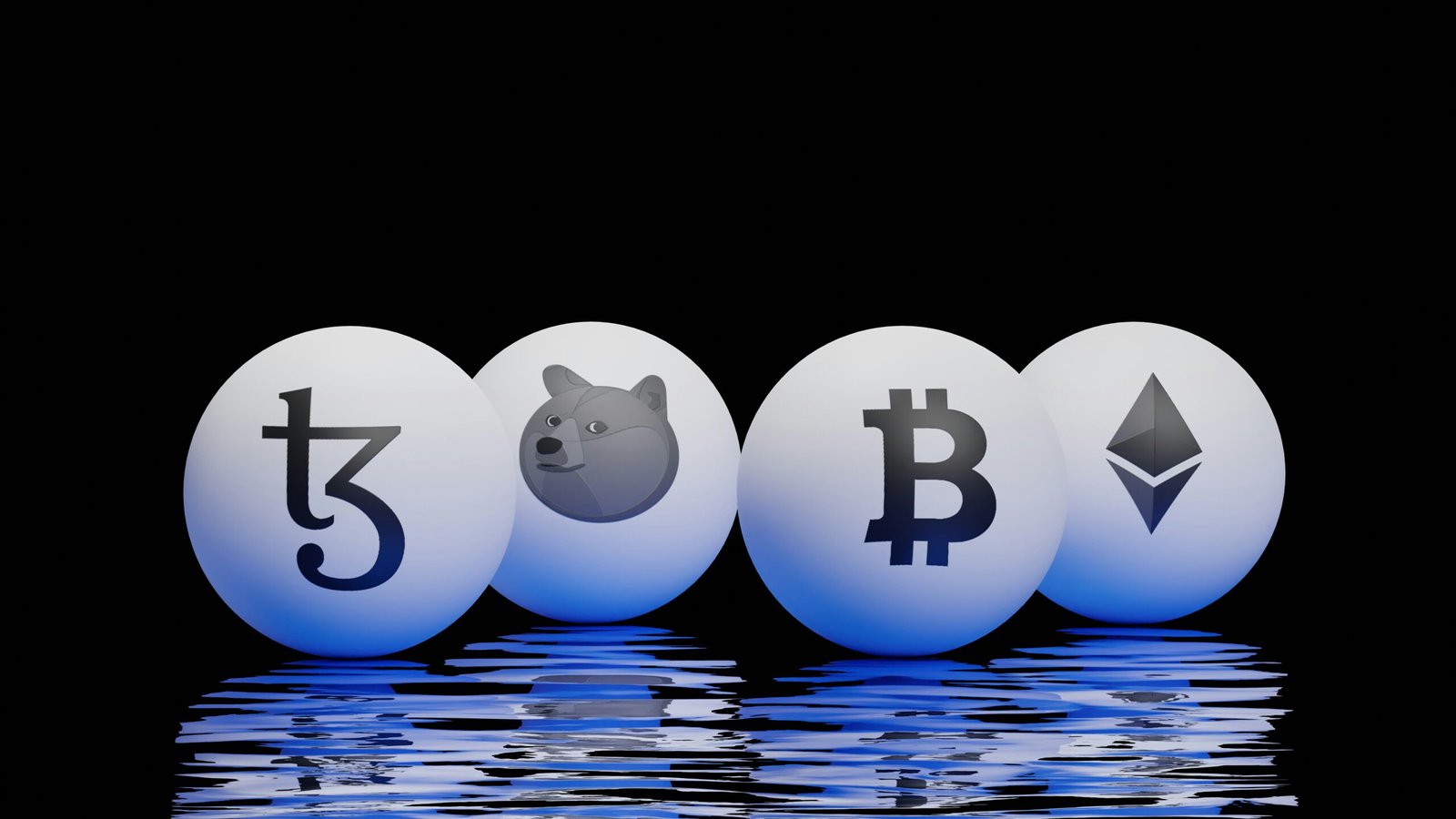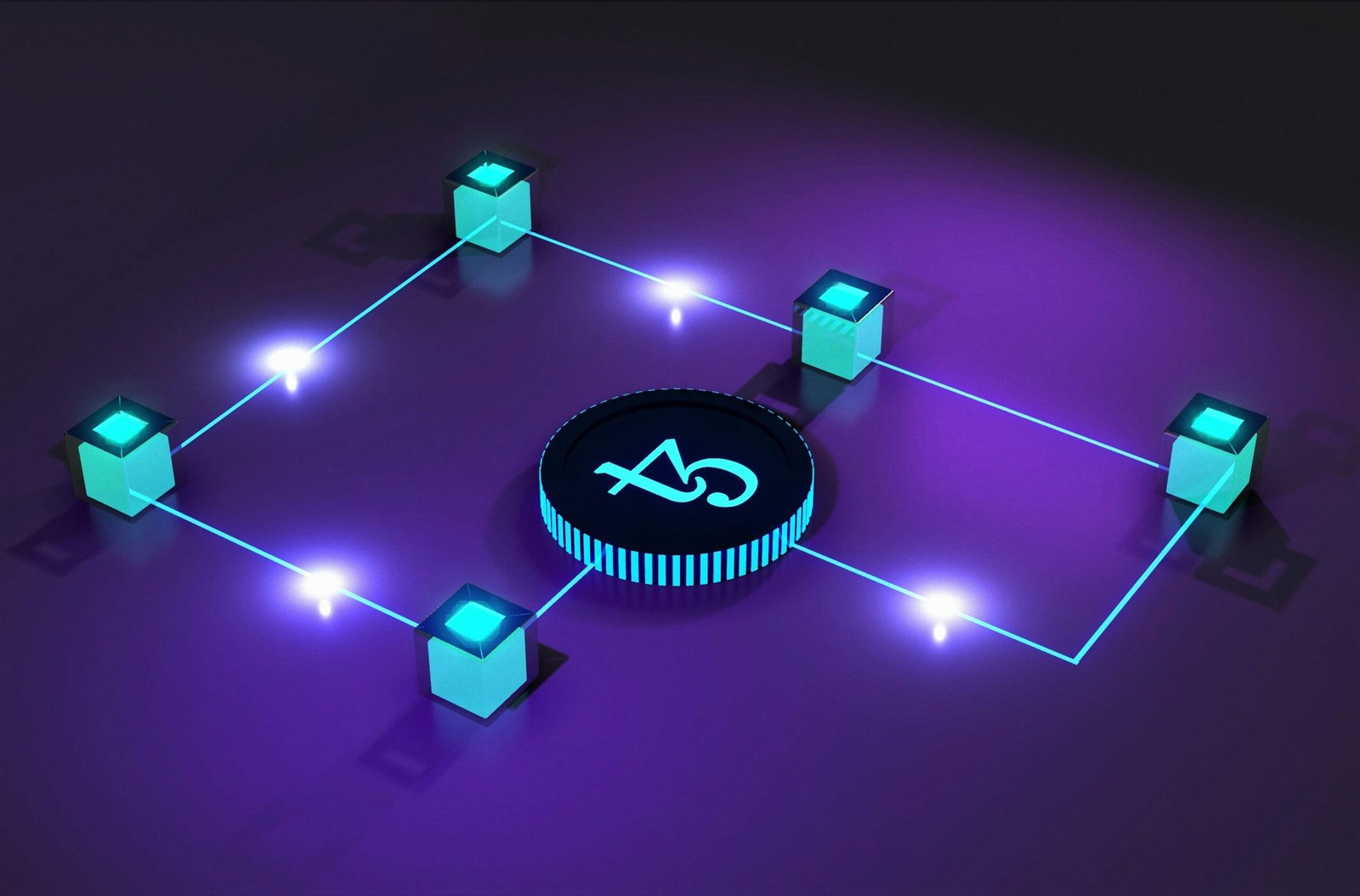Step-by-Step Guide to Creating a DIY Crypto Token
Introduction to Crypto Tokens
Crypto tokens have emerged as a pivotal element within the blockchain ecosystem, representing digital assets that are designed for a variety of uses. Unlike cryptocurrencies like Bitcoin and Ethereum, which operate on their own blockchains, tokens are created on existing blockchain platforms, such as Ethereum, Binance Smart Chain, and others. This fundamental difference sets the stage for a wide array of applications and innovations in the digital asset space.
One of the key distinctions between coins and tokens lies in their functionality. Coins typically serve as a medium of exchange or a store of value, akin to traditional currencies. In contrast, tokens can represent a multitude of assets and utilities, ranging from rights and access to services to representation of real-world assets. This versatility makes tokens an integral part of the decentralized finance (DeFi) landscape, gaming, supply chain management, and other sectors.
There are various types of crypto tokens, each serving distinct purposes. Utility tokens, for instance, provide users with access to a product or service within a specific blockchain ecosystem. Examples include Basic Attention Token (BAT), used in the Brave browser, and Chainlink (LINK), which is employed for decentralized oracles. Security tokens, on the other hand, represent ownership in an asset, such as shares in a company or real estate. These tokens are subject to regulatory oversight, ensuring investor protection. Non-fungible tokens (NFTs) have gained significant attention for their ability to represent unique digital assets, such as artwork, collectibles, and virtual real estate, exemplified by tokens like CryptoPunks and Bored Ape Yacht Club.
The concept of crypto tokens dates back to the advent of Ethereum in 2015, which introduced the ERC-20 standard, enabling the creation of tokens on its blockchain. This innovation spurred a wave of tokenized projects and initial coin offerings (ICOs), revolutionizing fundraising and asset management. Today, well-known tokens like USDT, UNI, and AAVE continue to play a crucial role in the blockchain ecosystem, driving the development of decentralized applications and financial products.
Understanding the Basics: Blockchain and Smart Contracts
Blockchain technology serves as the foundational layer for all cryptocurrencies, operating as a decentralized ledger that records transactions across a network of computers. This ensures transparency, security, and immutability, making it nearly impossible to alter transaction data once it has been recorded. The decentralized nature of blockchain eliminates the need for intermediaries, such as banks, thus reducing transaction costs and increasing efficiency.
Integral to the blockchain ecosystem are smart contracts, which are self-executing contracts with the terms of the agreement directly written into code. These contracts automatically enforce and execute the terms of the agreement when predefined conditions are met. Smart contracts are pivotal in the creation and management of tokens, as they allow for the automation of processes without the need for a central authority.
Ethereum is one of the most prominent platforms supporting smart contracts and token creation. It provides a robust framework for developers to create decentralized applications (dApps) and issue their tokens. Ethereum’s ERC-20 standard is widely used for creating fungible tokens, while the ERC-721 standard is popular for non-fungible tokens (NFTs). These standards ensure compatibility and interoperability within the Ethereum ecosystem.
Another notable platform is Binance Smart Chain (BSC), which offers similar functionalities to Ethereum but with enhanced transaction speed and lower fees. BSC utilizes the BEP-20 token standard, analogous to Ethereum’s ERC-20, enabling developers to create and manage tokens efficiently. The platform’s growing popularity is attributed to its ability to support smart contracts and decentralized applications with greater scalability.
In essence, the synergy between blockchain technology and smart contracts empowers individuals and organizations to create their crypto tokens with unprecedented ease and security. By leveraging platforms like Ethereum and Binance Smart Chain, developers can harness the potential of smart contracts to automate and streamline token-related processes, driving innovation in the digital economy.
Choosing the Right Blockchain Platform
When creating a DIY crypto token, selecting the appropriate blockchain platform is a crucial decision that will impact your token’s functionality, security, and overall success. Various factors must be considered, including transaction fees, scalability, security, and community support. Here, we compare three popular platforms: Ethereum, Binance Smart Chain (BSC), and Solana, to help you make an informed decision.
Ethereum is one of the most established and widely used blockchain platforms. It offers a robust ecosystem with extensive developer support and a variety of tools for token creation. Ethereum’s main advantage lies in its security and decentralization. However, the downside is its relatively high transaction fees, which can be a significant drawback for projects with a high volume of transactions. Despite the cost, Ethereum’s strong community support and reputation make it a reliable choice for many developers.
Binance Smart Chain (BSC) is known for its low transaction fees and faster block times compared to Ethereum. BSC provides a more cost-effective solution, making it attractive for developers looking to minimize costs. Additionally, BSC is compatible with Ethereum, allowing for easy migration of Ethereum-based tokens. However, BSC is often criticized for its lower level of decentralization, which may pose security risks. Nonetheless, its affordability and efficiency make it a popular choice, especially for smaller projects.
Solana is gaining traction due to its high scalability and low transaction costs. Solana’s unique architecture allows it to process thousands of transactions per second, making it ideal for applications requiring high throughput. While Solana is relatively newer compared to Ethereum and BSC, it boasts strong security features and a growing developer community. However, being a newer platform, it may not yet have the same level of developer tools and resources available as Ethereum.
To choose the right blockchain platform for your token, consider your specific needs and goals. If security and a well-established ecosystem are your priorities, Ethereum may be the best choice. For cost-efficiency and interoperability with Ethereum, Binance Smart Chain is an attractive option. If your project demands high scalability and low fees, Solana could be the way to go. Evaluate each platform’s strengths and weaknesses in the context of your project to make an informed decision.
Setting Up a Development Environment
Creating a DIY crypto token necessitates a robust local development environment. The first step involves installing Node.js and npm, both fundamental tools for JavaScript runtime and package management. Visit the official Node.js website and download the installer for your operating system. During installation, npm is automatically included. Verify the installation by running node -v and npm -v in your command line interface to check the versions.
Next, install the Truffle Suite, an essential framework for Ethereum development. Open your terminal and execute npm install -g truffle. After installation, confirm its presence by typing truffle version. Truffle Suite simplifies the process of building and testing smart contracts, making it a crucial tool for your crypto token project.
For coding, set up an Integrated Development Environment (IDE) such as Visual Studio Code. Download and install Visual Studio Code from its official website. Enhance your development experience by installing extensions like Solidity and JavaScript, which provide syntax highlighting and other useful features for smart contract development.
To avoid the expenses associated with mainnet transactions during development, utilize Ethereum test networks like Ropsten. Ropsten operates similarly to the Ethereum mainnet but uses test ether, which is free and abundant. To connect to Ropsten, you will need a wallet like MetaMask. Install the MetaMask browser extension, set up your wallet, and switch to the Ropsten test network within MetaMask.
After these setups, you are ready to initiate your project. Create a new directory for your project, navigate to it in the terminal, and run truffle init to initialize a new Truffle project. This command generates a basic directory structure with folders for contracts, migrations, and tests, setting the stage for your crypto token development.
By following these steps, you establish a comprehensive development environment, enabling a streamlined and efficient process for creating your DIY crypto token.
Writing and Deploying the Smart Contract
Creating a DIY crypto token involves writing a smart contract, which is a self-executing contract with the terms of the agreement directly written into code. For Ethereum-based tokens, the Solidity programming language is commonly used. This section will guide you through writing a basic smart contract and deploying it to a test network.
First, let’s start with the core components of the smart contract. A basic smart contract in Solidity consists of the following elements:
1. Defining the Token’s Basic Attributes:
Each token has a name, symbol, total supply, and decimal places. Here’s an example of how to define these attributes:
pragma solidity ^0.8.0;contract MyToken {string public name = "MyToken";string public symbol = "MTK";uint8 public decimals = 18;uint256 public totalSupply = 1000000 * (10 ** uint256(decimals));}In this example, the token’s name is “MyToken,” its symbol is “MTK,” it has 18 decimal places, and a total supply of 1,000,000 tokens.
2. Mapping Balances and Allowances:
Next, we need to create a mapping to keep track of each address’s balance and allowances:
mapping(address => uint256) public balanceOf;mapping(address => mapping(address => uint256)) public allowance;3. Implementing Transfer Functions:
Implementing functions to transfer tokens between addresses is crucial. Here’s a simple implementation:
function transfer(address _to, uint256 _value) public returns (bool success) {require(balanceOf[msg.sender] >= _value, "Insufficient balance");balanceOf[msg.sender] -= _value;balanceOf[_to] += _value;return true;}This function checks if the sender has enough tokens, reduces the sender’s balance, and increases the recipient’s balance.
Once the smart contract is written, the next steps are to compile, test, and deploy it. You can use tools like Remix, an online Solidity IDE, to compile your contract. After ensuring there are no errors, you can test the contract by deploying it to an Ethereum test network such as Ropsten or Rinkeby.
To deploy the contract, follow these steps:
- Open Remix and paste the smart contract code into the editor.
- Navigate to the ‘Solidity Compiler’ tab and compile the contract.
- Go to the ‘Deploy & Run Transactions’ tab, select ‘Injected Web3’ as the environment (make sure you are connected to MetaMask), and deploy the contract.
- Once deployed, you can interact with the contract through Remix or any Ethereum wallet that supports smart contract interactions.
By following these steps, you will have successfully written, compiled, tested, and deployed your own DIY crypto token smart contract on an Ethereum test network.
Minting and Distributing Your Token
Minting tokens is the process of creating new tokens on the blockchain, a critical step in the lifecycle of any crypto token. This process is executed using the smart contract deployed in the previous section. The smart contract contains the rules and functions that govern the creation and distribution of these tokens, ensuring that the specified parameters are adhered to.
To mint tokens, you need to interact with the smart contract through a blockchain interface like Remix or via command-line tools if you’re comfortable with them. The minting function in the smart contract will typically require parameters such as the recipient’s address and the number of tokens to be minted. Once this function is called, the specified amount of tokens will be created and assigned to the recipient’s address.
Distribution of the minted tokens can be executed through various methods, each with its own set of advantages and best practices. Airdrops, for instance, involve distributing free tokens to a large number of wallet addresses, often to raise awareness or reward early supporters. This method is particularly effective for generating buzz and building a community around your token.
Token sales, on the other hand, involve selling a portion of the minted tokens to investors in exchange for cryptocurrency or fiat currency. This method is commonly used to raise capital for further development and marketing efforts. Transparency and fairness are crucial here; setting clear terms and providing a transparent process will help in gaining trust from potential investors.
Staking rewards are another popular distribution strategy, where tokens are distributed to users who lock up their tokens in a staking mechanism. This incentivizes users to hold onto their tokens, thus providing stability and security to the network. The rewards can be distributed periodically based on the amount and duration of the tokens staked.
Best practices for token distribution include ensuring a fair and transparent process, avoiding centralization of tokens, and providing clear communication to the community. Utilizing multiple distribution methods can also help in reaching a wider audience and achieving a more equitable distribution.
Integrating Your Token with Wallets and Exchanges
Once you have created your crypto token, the next crucial step is to make it compatible with popular cryptocurrency wallets and exchanges. This integration enhances usability and accessibility, ensuring that your token reaches a broader audience.
Compatibility with Cryptocurrency Wallets
Firstly, to integrate your token with wallets like MetaMask and Trust Wallet, you need to add your token details to their respective platforms. For MetaMask, navigate to the ‘Assets’ tab and select ‘Add Token.’ Enter the token contract address, the token symbol, and the decimals of precision. Similarly, Trust Wallet requires you to input these details under the ‘Add Custom Token’ section. Ensuring your token is ERC-20 or BEP-20 compliant will facilitate smooth integration as these standards are widely supported.
Listing on Decentralized Exchanges (DEXs)
Listing your token on decentralized exchanges such as Uniswap or PancakeSwap involves a few straightforward steps. For platforms like Uniswap, you need to navigate to their interface, select ‘Pool,’ and then ‘Add Liquidity.’ Enter the token contract address and pair it with a major cryptocurrency like ETH or BNB. This action creates a liquidity pool, allowing users to trade your token seamlessly. PancakeSwap follows a similar procedure but operates on the Binance Smart Chain. Ensure that you have sufficient liquidity to attract traders and maintain a stable market.
Getting Listed on Centralized Exchanges
For broader reach, you may consider listing your token on centralized exchanges like Binance or Coinbase. This process is more complex and involves meeting specific criteria and undergoing a rigorous vetting process. Typically, you need to fill out an application form detailing your token’s purpose, technology, team, and legal compliance. Centralized exchanges may also require a listing fee and a demonstration of significant community support and trading volume. Successfully listing on these platforms can significantly enhance your token’s visibility and credibility.
By carefully following these steps, you can ensure that your crypto token is integrated with essential wallets and exchanges, thereby increasing its utility and adoption.
Ensuring Security and Compliance
The importance of security in the context of crypto tokens cannot be overstated. As decentralized financial instruments, crypto tokens are susceptible to various forms of cyber threats and vulnerabilities. Ensuring robust security measures is paramount in protecting both the token and its users. One of the primary steps in securing a crypto token is conducting thorough code audits. Engaging experienced auditors to rigorously review the token’s smart contract code can help identify and rectify potential weaknesses before they can be exploited.
Utilizing established security libraries is another critical measure. These libraries, vetted by the developer community, offer pre-built functionalities for common security requirements, thereby reducing the likelihood of introducing vulnerabilities in the smart contract. Additionally, adhering to best practices in smart contract development, such as minimizing the use of external calls and implementing proper access controls, can significantly enhance security.
Common vulnerabilities, such as reentrancy attacks, pose serious risks to the integrity of a crypto token. Reentrancy attacks occur when an external contract call is made and then recursively re-entered before the initial execution is completed. To mitigate this risk, developers can adopt techniques like the “checks-effects-interactions” pattern, ensuring that state changes are made before external calls are executed.
Beyond technical security, legal and regulatory considerations play a crucial role in the lifecycle of a crypto token. Compliance with Know Your Customer (KYC) and Anti-Money Laundering (AML) regulations is essential, particularly if the token will be used in jurisdictions with stringent regulatory frameworks. Implementing KYC/AML protocols can help prevent the misuse of the token for illicit activities, thereby fostering trust and credibility within the user community.
Incorporating these security and compliance measures not only safeguards the crypto token but also ensures its sustainable and lawful operation. By prioritizing security and adhering to regulatory requirements, developers can build a resilient and trustworthy crypto token that stands the test of time.






